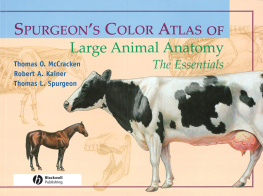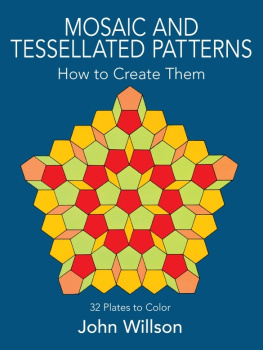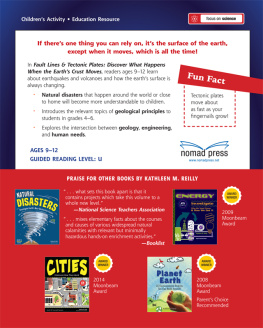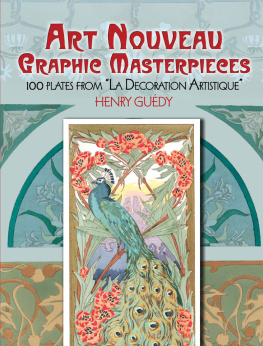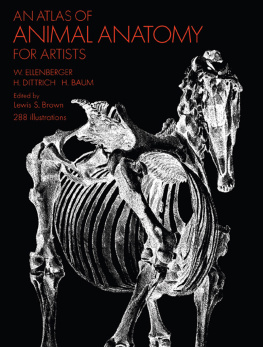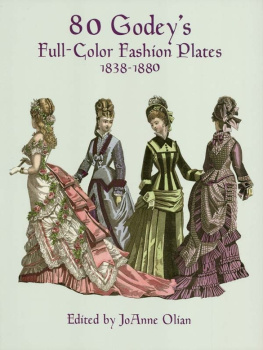
1999 Lippincott Williams & Wilkins
2006 Blackwell Publishing
All rights reserved
Blackwell Publishing Professional
2121 State Avenue, Ames, Iowa 50014, USA
Orders: 1-800-862-6657
Office: 1-515-292-0140
Fax: 1-515-292-3348
Web site: www.blackwellprofessional.com
Blackwell Publishing Ltd
9600 Garsington Road, Oxford OX4 2DQ, UK
Tel.:+44 (0)1865 776868
Blackwell Publishing Asia
550 Swanston Street, Carlton, Victoria 3053, Australia
Tel.:+61 (0)3 8359 1011
Authorization to photocopy items for internal or personal use, or the internal or personal use of specific clients, is granted by Blackwell Publishing, provided that the base fee is paid directly to the Copyright Clearance Center, 222 Rosewood Drive, Danvers, MA 01923. For those organizations that have been granted a photocopy license by CCC, a separate system of payments has been arranged. The fee codes for users of the Transactional Reporting Service are ISBN-13: 978-0-6833-0673-6/2006.
First edition
Library of Congress Cataloging-in-Publication Data
McCracken, Thomas O.
Spurgeon's color atlas of large animal anatomy : the essentials /
Thomas O. McCracken, Robert A. Kainer, Thomas L. Spurgeon
p. cm.
ISBN 978-0-6833-0673-6
1. Veterinary anatomy Atlases. I. Kainer, Robert A. II. Title.
SF7613M35 1999
636.089'1dc21
99-20525
CIP
Thomas Spurgeon
TO OUR COLLEAGUE AND FRIEND
Dr. Thomas L. Spurgeon, exceptionally well-trained anatomist, superb teacher, and educational innovator, devoted his professional life to the advancement of anatomic education through scientific investigation and the dissemination of anatomic knowledge.
Following service to his country in the United States Air Force, Thomas L. Spurgeon entered college. Upon completion of his doctorate in anatomy in the School of Veterinary Medicine at the University of Califomia-Davis, Dr. Spurgeon accepted a faculty position in the College of Veterinary Medicine at Washington State University. His record as an excellent anatomist at that institution led to a position in the College of Veterinary Medicine and Biomedical Sciences at Colorado State University.
His broad knowledge of both human and veterinary anatomy was utilized fully at Colorado State. Students requiring courses in basic human anatomy as well as those majoring in veterinary medicine and various animal sciences profited from the instruction provided by this well-rounded anatomist who possessed outstanding pedagogic skill. His expertise was equally appreciated by the graduate students he mentored, particularly those in the biomedical illustration program.
Dr. Spurgeon, a pioneer in the computer-assisted instruction of anatomy, was continually seeking new methods of presentation. He and his colleague and close friend, Thomas O. McCracken, conceived the unique anatomic presentation used in this atlas.
Tragically, Dr. Spurgeon's untimely death in an automobile accident in 1997 brought a halt to his brilliant career. Dr. Spurgeon's devoted sons, Aaron and Kyle, are indeed proud of their father's accomplishments. Countless students mourn the passing of a man who, as teacher and friend, contributed so much to their lives.
ACKNOWLEDGMENTS
Many talented individuals contributed to the production of Spurgeons Color Atlas of Large Animal Anatomy: The Essentials. Foremost among them were the artists, Conery Calhoon, Molly Babich, Gale Mueller, and Sandra Mullins, who colored Thomas McCrackens original drawings of anatomic specimens. They employed manual and digital techniques to reproduce the subtle colors of tissues and organs.
Consultants, who authored plates drawn by Thomas McCracken, selected clinical conditions and husbandry applications based on their anatomic significance. The consultants were Dr. Gayle Trotter for the horse; Dr. Frank Garry for the ox; Dr. Joan Bowen for the sheep and goat; Dr. LaRue Johnson for the llama and alpaca and the swine; and Dr. John Avens for the chicken. These specialists reviewed the plates on the various species, enhancing the accuracy of the presentations. Their contributions are gratefully acknowledged.
Carroll Cann, Executive Editor of Teton-New Media, was an enthusiastic supporter of the concept of the atlas. We thank him for his suggestions and encouragement.
Special thanks are due the late Dr. Patricia Brooks who supported her husband, Dr. Spurgeon, and frequently assisted him in his work. She, too, was a contributor to this atlas.
We greatly appreciated the reliable assistance of Dennis Madden, pathology technician in the College of Veterinary Medicine and Biomedical Sciences at Colorado State University. His procurement of specimens and his dissection skills were essential to the production of this atlas.
We thank Mark Goldstein for a students viewpoint. His assistance with compilation of the index and his review and comments on the plates were most helpful.
We are grateful to Dr. Michael Smith from the School of Veterinary Medicine at Ross University for his careful review of the final proofs. His knowledge of anatomy, his fine teaching skills, and his critical eye well qualified him for this arduous task.
Acknowledgment is due the Department of Anatomy and Neurobiology and the Department of Clinical Sciences at Colorado State University for the use of their facilities and for providing living an-imals, skeletons, embalmed specimens, and necropsy specimens. Dr. Robert Lee prepared and was most helpful in providing anatomic specimens. We acknowledge the kindness of exhibitors at the National Western Stock Show and Midnight Valley Friesens for permission to photograph their animals.
We thank Alpine Publications, Inc. of Loveland, Colorado, for permission to use drawings from our book, Horse Anatomy, A Coloring Atlas. Permission from Pfizer Animal Health Group to use drawings of the chickens anatomy from Anatomical Atlas is also appreciated.
INTRODUCTION
Spurgeons Color Atlas of Large Animal Anatomy: The Essentials is not a complete, detailed anatomic atlas. Instead, it presents topographic relationships of the major organs of the horse, ox, sheep, goat, llama, alpaca (a smaller species with long, lustrous hair), swine, and chicken in a simple yet technically accurate format. As an important food animal, the chicken is included with the large domestic animals in this atlas. Throughout the Atlas, most male and female of a given species are on facing pages. The majority of the plates contain information on the entire body Some plates are confined to a region; a few contain organs isolated from the rest of the body. Whereas most systems (e.g., digestive and reproductive) are presented for each animal, other systems are included only for some species to illustrate general anatomic patterns. Structures common to the various animals are labeled several times; other structures are labeled on only one or two species, usually emphasizing specific anatomy (the anatomy peculiar to a certain species). Animal specialists authored plates illustrating selected clinical or husbandry applications that reflect the anatomy of the organs involved.
The Atlas is intended for use by individuals at different stages of their education, serving as a survey of the specific anatomy of the different animals. Advanced 4-H club members, high school vocational agriculture students, and college students studying veterinary medical technology, veterinary medicine, animal science, and wildlife biology can use this
Next page
